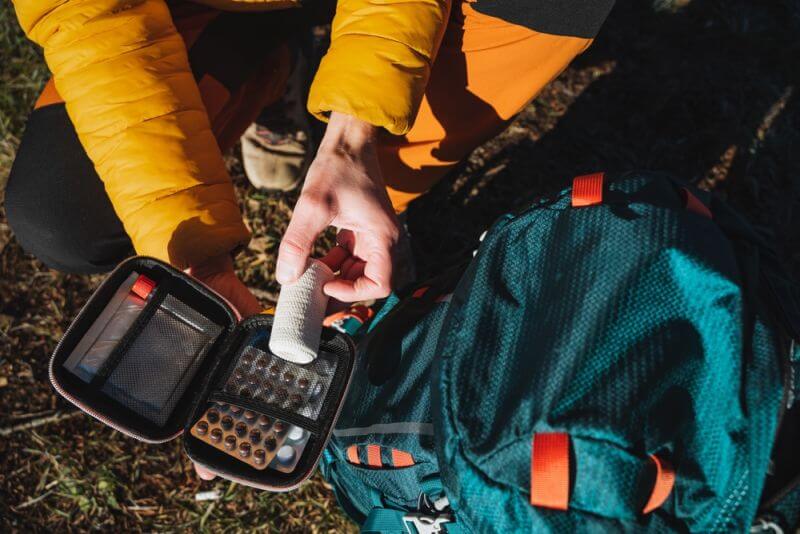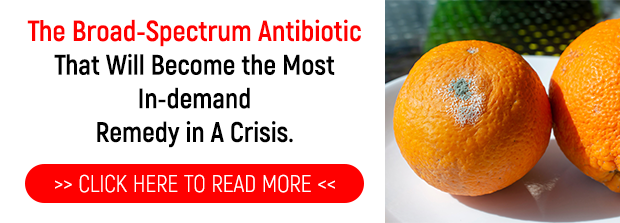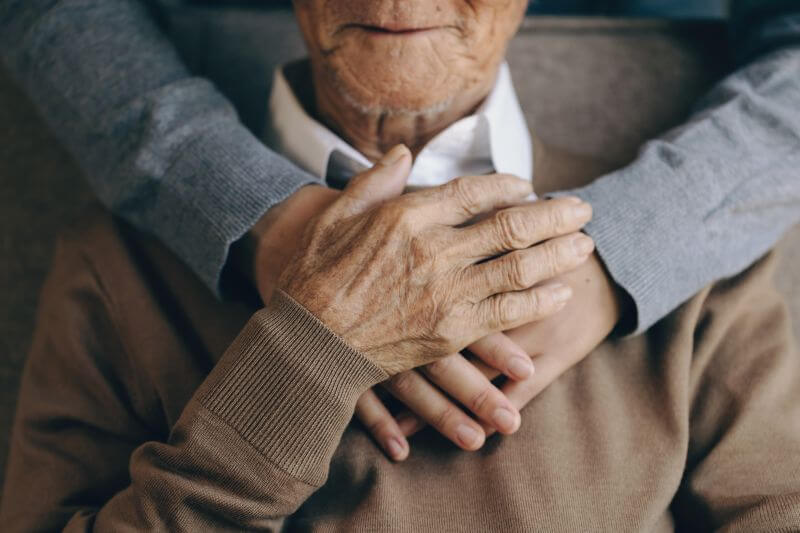Disclaimer: I’m not a doctor or a lawyer, so please don’t mistake anything in this article for medical or legal advice. For medical advice, please consult a licensed physician. For legal advice regarding the potential liability of aiding others, or other matters, please consult a practicing attorney. Even OTC many medicines are dangerous and can kill in the hands of children, the ignorant or the irresponsible, so do your research before using medicines.
Building a survival medical stockpile is an obstacle every survivalist must tackle. This article will list and discuss some, but not all, of the medicines it should include. Individual health impacts which medications are most important for each individual, so be sure to include any medications taken regularly in your first aid kit and Medical Stockpile. There are obviously also many other items beside medication that should be included as well.
Over more decades of life than I’d care to admit, I have been present in many medical emergencies and had the occasion to treat everything from gunshot wounds to Boy Scouts running headlong into barbed wire fences to rollover vehicles accidents … all under austere conditions. If you love the outdoors, sooner or later you’re going to have to make a choice. “Do I help?” If you are one of the 10% of survivors who is able to take meaningful action in emergencies instead of standing around like a statue or running in circles, it’s a foregone conclusion. Like the FEMA tag line, “Until help arrives, YOU are the help!”
If you decide to help someone else, be to ask permission before touching them if they are conscious and capable of responding. If you decide to use any kind of medication, even something as simple as topical antibiotic ointment, be sure to find out if the patient has any allergies first. You don’t want to end up harming them instead of helping them.
So, let’s get to it. I will go over some of the most important medicines for survival.
1. Aspirin – Acetylsalicylic Acid is an analgesic (pain reducer), antipyretic (fever reducer), NSAID (Non-Steroidal Anti-Inflammatory Drug), antithrombotic (reduces the formation of blood clots) and is used to reduce the incidence of heart disease, among other uses. There is an abundance of evidence of the use of salicylic bark to make medicinal teas the world over with evidence dating back as far as 4,000 years ago. Aspirin may be life saving for adult patients with chest pain.
2. Acetaminophen – An analgesic and antipyretic, it is included in first aid kits for its pain and fever reducing abilities. Fevers are not necessarily bad. They are part of the body’s strategy to eliminate pathogens, but very high fevers can cause brain damage. Parents of infants and children should keep plenty of age-appropriate liquid acetaminophen preparations on hand.
3. Ibuprofen – An NSAID. Inflammation is a common malady during survival ordeals due to injury, sleeping on the ground, and physical exertion.
4. Prescription Pain Medication – When you need it, nobody will have to tell you. You will know. If pain gets severe enough, you may be screaming that you need it to anybody within earshot.
Which opioid pain medication and the correct dosage depends on a number of factors and should be determined by someone with proper training. 6-7mg of Tramadol can make some patients (often patients who have never had opioids before) sleepy, but it may take a dose of Fentanyl just to take the edge off pain for another patient who is extremely opioid tolerant. That dose would probably be lethal for the first patient who needs a nap after a quarter of a Tramadol. Tolerance can be because the patient is taking opioids or it can be genetic, such as it is for some redheads of Scandinavian descent.
There are several medications in between Tramadol and Fentanyl, such as codeine, hydrocodone, and oxycodone. Opioids come in short and long-acting forms. Oxycontin is the long acting (controlled release) form of oxycodone, but the release over time is controlled by a coating on the tablet. If the coating is damaged, all the medication can be released at once, which can cause an overdose.
Combat medics have to manage some of the worst pain one can possibly imagine in patients without knowing how tolerant they are. If the patient can sit up, this can be accomplished with a buccal fentanyl lozenge on a weighted handle. The medic puts it in the patient’s mouth and when does its job, the patient’s jaw goes slack, and the lozenge either falls out on its own or the medic takes it out, so the patient doesn’t get too high of a dose.
Too high a dose suppresses the central nervous system, causing the patient to stop breathing. This is why prescribing opioids can be dangerous and should only be done by a trained healthcare worker and is the reason for the next medication.
5. Narcan – Narcan is an opioid agonist that reverse an opioid overdose, potentially saving a life. Narcan is not hard to get in much of the US now and if you have opioids on hand, you should have Narcan too, in case of an accidental overdose. How to obtain prescription medications is the subject of another article.
6. Diphenhydramine – An antihistamine for allergic reactions, pruritis (itchy skin), urticaria (hives), allergic rhinitis, insomnia, and motion sickness.
7. Docusate Sodium – A stool softener. Adapting to a new diet and drinking less water can cause constipation, as can antidiarrheal medications.
8. Bismuth Subsalicylate – Brands include Pepto-Bismol. This medication is an antidiarrheal, antiemetic (stops vomiting), that also soothes heartburn and upset stomach which can accompany a change in diet. Do not give to children under 12.
9. Loperamide Hydrochloride – An antidiarrheal, both diarrhea and constipation are common maladies during survival ordeals as survivors adjust to new diets and are exposed to pathogens. Overuse obviously causes constipation. Antidiarrheals should not be used with diarrhea and a fever, bloody diarrhea or diarrhea that lasts more than two days.
10. Glucose – Available in tablet, powers and gel forms. Used to treat hypoglycemia and hypothermia. It is included in survival kits to get hypothermic survivors shivering again.
11. Modafinil or Armodafinil – Provigil and Nuvigil are stimulants can keep survivors from falling asleep and are used to keep combatants alert in times of war. A USAF Research Laboratory study concluded that modafinil improved alertness and performance during extended periods of reduced sleep without the undesirable side effects of dextroamphetamine. It and recommended that it be studied for use by Special Forces and inclusion in aircrew survival kits. (Jeffery Whitmore, 2004)
12. Oral Rehydration Salts – You can use CeraLyte or the WHO formula or make your own. Add a lemon drink mix with NutraSweet to the WHO formula ORS to improve taste. Do not use sugar or it will throw of the osmolarity.
Antibiotics
When using antibiotics, the entire course of antibiotics should be finished. Do not stop taking them when you feel better, or you will contribute to the production of antibiotic-resistant strains of pathogens. Please don’t help usher mankind into a post-antibiotic era where antibiotics no longer work.
13. Azithromycin – Sold under the brand names Zithromax and Z-pak, azithromycin is the only course of antibiotics I am aware of that will fit in a pocket survival kit as a course of this antibiotic is only six tablets. Used to treat bronchitis, ear infections, pneumonia, sinusitis. skin infections, tonsillitis, and traveler’s diarrhea. Used for cholera in children and pregnant women. Do not take if allergic to erythromycin or with the antihistamines Seldane or Hismanal.
14. Amoxycillin – This antibiotic in the penicillin family is one of the most frequently prescribed antibiotics. It is used to treat bacterial infections such as strep throat, middle ear infections, skin infections, pneumonia, urinary tract infections, and infections of the teeth and jaws.
15. Sulfamethoxazole & Trimethoprim – Sold under the brand name Bactrim DS, this combination of two drugs is a sulfa antibiotic. It is good to have an antibiotic from the penicillin family and a sulfa drug because some people are allergic to one or the other. This one is used to treat any of the same illnesses as amoxicillin but also traveler’s diarrhea, which would be very important if infrastructure is down because then we will be the ones living in the less developed nation.
16. Doxycycline – A wide-spectrum antibiotic used for certain bacterial and parasitic infections including pneumonia, cholera, chlamydia, Lyme disease, typhus, syphilis, and malaria. Should not be used by pregnant women.
17. Ciprofloxacin – Cipro is a powerful fluoroquinolone antibiotic that is effective in treating an array of serious bacterial infections, including joint, bone, abdominal, respiratory tract, urinary tract, kidney, prostate, and skin infections, acute chronic bronchitis, acute sinus infections, gonorrhea, typhoid, forms of diarrhea, and inhalational anthrax. Cipro is like a nuclear weapon antibiotic in that it has some scary side effects, so it is reserved for serious problems when other antibiotics will not work.
Topical Medications
I prefer carrying liquid topical medications in small dropper bottles, vials and spray bottles in addition to single-use towelettes because it is easier to verify that they are full and when towelettes dry out, they can be rehydrated.
18. 10% Povidone-Iodine – Sold under the brand name Betadine, povidone-iodine is less damaging to tissues than tinctures of iodine. It can be used for wound irrigation solution when diluted with water at a 10/1, PVP-I/water ratio. It can also be used as a topical antiseptic and for water treatment, although more drops pf PVP-I are needed than of 2% Tincture of Iodine. (Eric A. Weiss, Wound Closure, 2005)
19. 1% Hydrocortisone Cream – Topical corticosteroid, antipruritic used for skin problems.
20. Antibiotic Ointment – Antibiotic ointment protects the skin, kills bacteria and promotes healing.
21. Benzalkonium Chloride or BZK & Lidocaine – BZK is a topical antiseptic used to treat cuts, scrapes, and minor burns. It doesn’t sting like alcohol and iodine.
22. Compound Benzoin Tincture – Benzoin improves adhesion of adhesive dressings, moleskin, and wound closure strips and protects the skin from allergy to adhesives. It is both an antiseptic and an astringent. Benzoin is very helpful when applying tape, moleskin, wound closure strips, or adhesive bandages to active patients in austere settings. (Eric A. Weiss, Wound Closure, 2005) (Wikipedia, Tincure of Benzoin, 2024)
23. Dibucaine 1% Ointment – Topical analgesic and antipruritic used to treat pain and itching associated with minor cuts, burns, sunburn, insect bites and stings, hemorrhoids, and other rectal irritations.
24. Potassium Permanganate – It may be old school, but no medicine has more survival uses in so little space making important for Pocket Survival Kits. It comes as truly tiny crystals or tablets and is always mixed with water before use. I have already written an article on how to use it, but it is a topical antiseptic, wound irrigation solution, antifungal, oral wound irrigation solution, canker core cure, astringent, water treatment chemical, can be used to make fire and signal on snow! It isn’t the best choice for all of these applications but can do them all in an emergency and takes up little space. Be careful with it though, it is a potent oxidizer and can stain clothing, carpet and oxidize fingernails and toenails. (Wiseman, 1993)
25. White Petrolatum or Aquaphor Healing Ointment – White petrolatum and Aquaphor are skin protectants that are used to treat chapped lips, and to keep scabs and burns moist to promote healing, but only after the burn has stopped radiating heat. Otherwise, they can trap heat, increasing the severity of the burn.
Petrolatum also makes long-burning tinder that can be lit with a spark when mixed with medical cotton.
26. Witch Hazel – I really wanted this to be the top 25 but I would be a hypocrite if I left out witch hazel, which I use so often with my toddler that I carry it in my pocket. Witch Hazel is an astringent and antiseptic and can be used for minor cuts and insect bites. When I ran out of other medications for mosquito bites one year in Brazil, I used Tuck’s pads. Witch hazel dried them out, made them stop itching, and doesn’t sting my toddler, so I have carried it ever since.
References
- Eric A. Weiss, M. (2005). Wound Closure. In M. Eric A. Weiss, A Comprehensive Guide to Wilderness & Travel Medicine, 3rd edition (pp. 89-90). Oakland, CA: Adventure Medical Kits.
- Jeffery Whitmore, B. D. (2004). The Efficacy of Modafinil as an Operational Fatigue Countermeasure Over Several Days of Reduced Sleep During a Simulated Escape and Evasion Scenario. Brook City-Base, Texas: USAF Research Laboratory.
- Wikipedia. (2024, January 12). Tincure of Benzoin. Retrieved from www.wikipedia.org: https://en.wikipedia.org/wiki/Tincture_of_benzoin
- Wiseman, J. “. (1993). Survival Kit. In J. “. Wiseman, SAS Survival Guide (p. 20). New York: Collins Gem.













































































Good article. Use up your end-of-year FSA dollars to buy these. A couple tips. For a suspected heart attack, have the patient chew to a paste 2 plain aspirin tablets and swallow with a small sip of water. Anti-clotting. And never take Tylenol/acetaminophen when consuming alcohol. Both are processed by the liver and both at once will overtax the liver. Narcan is readily available free from many public health departments when you take a Narcan class (also free). Benzoin is used on either side of the laceration NOT in it – to make a sticky area for the butterfly strips to adhere to. Question – how easy is it to buy Provigil? Controlled substance?